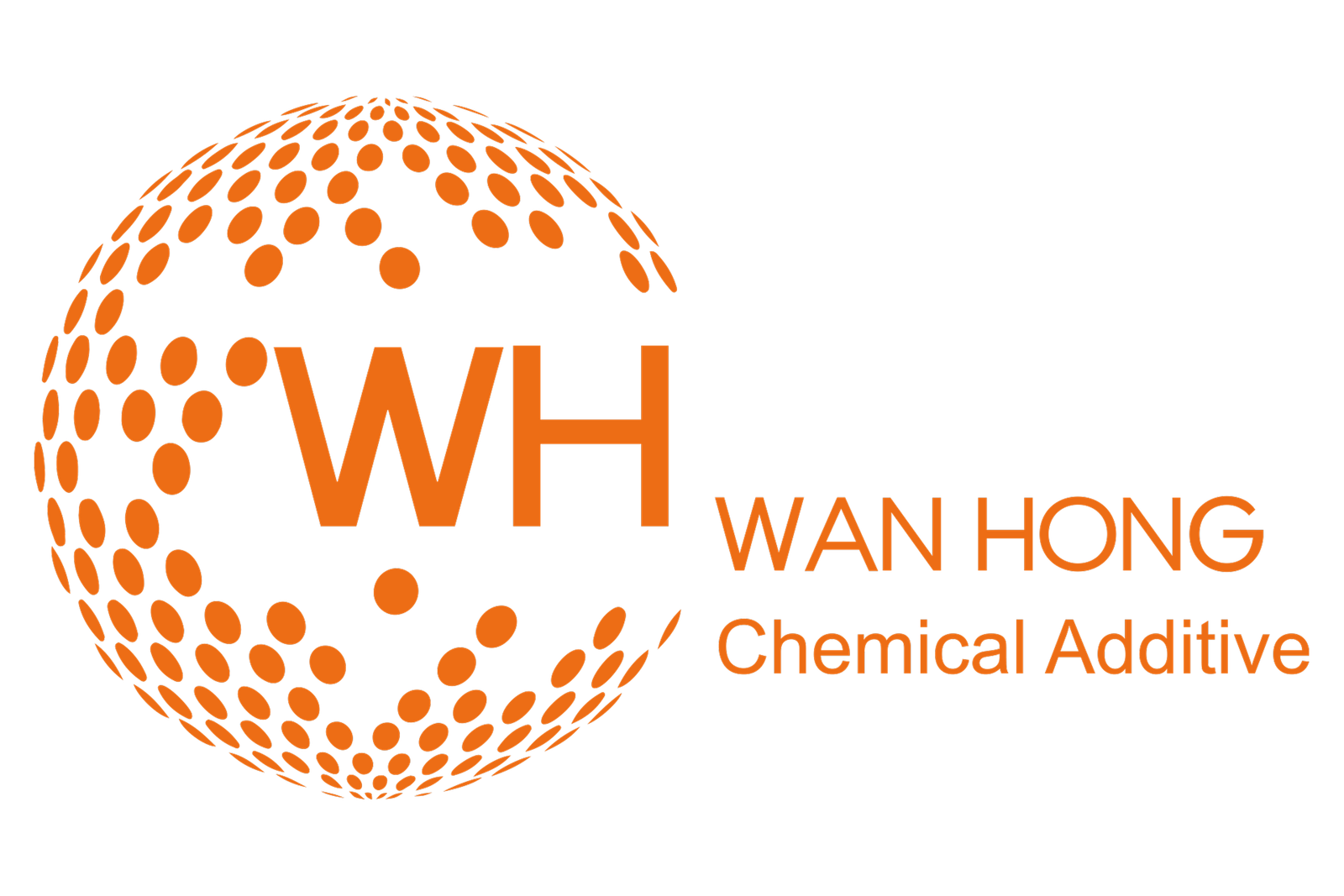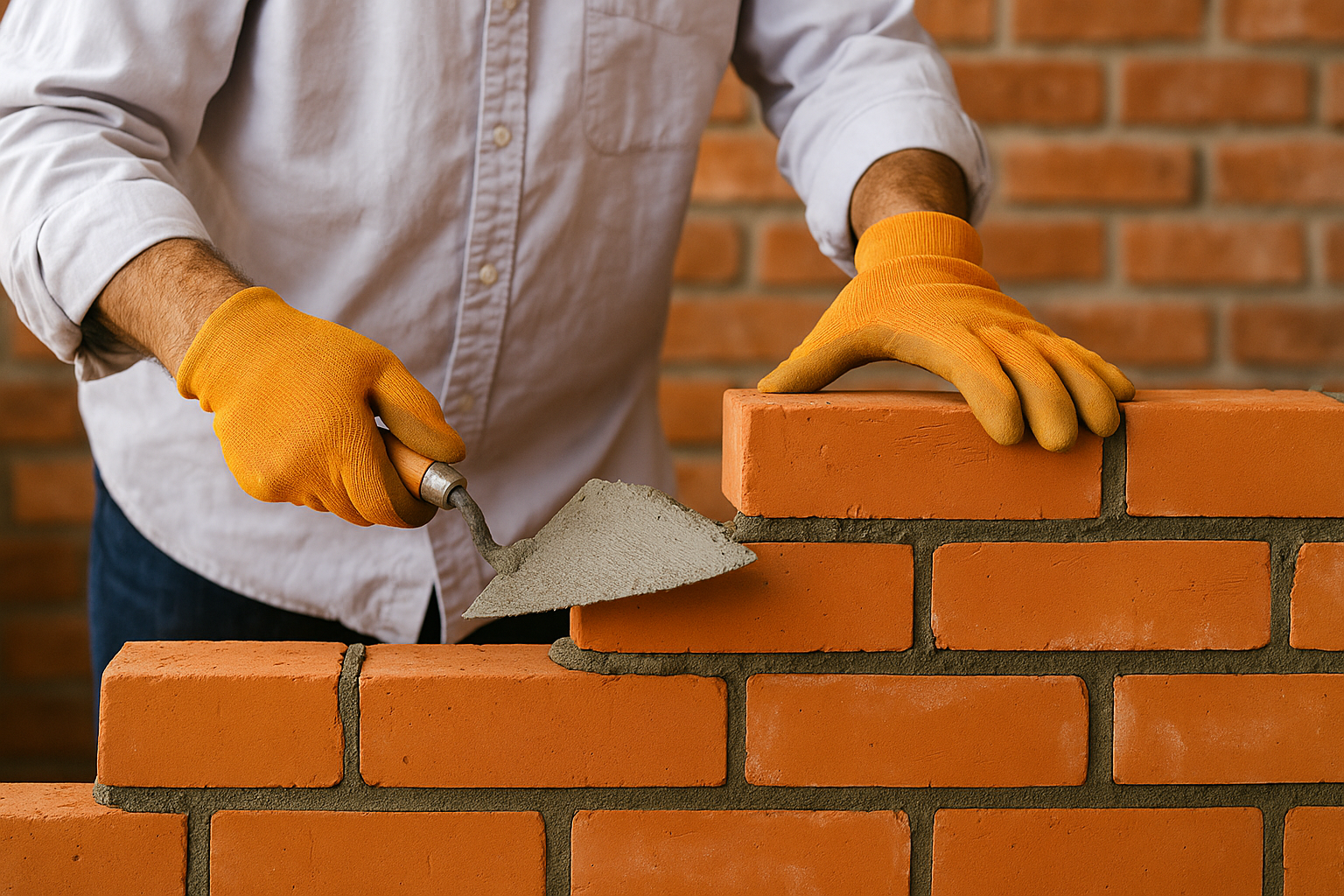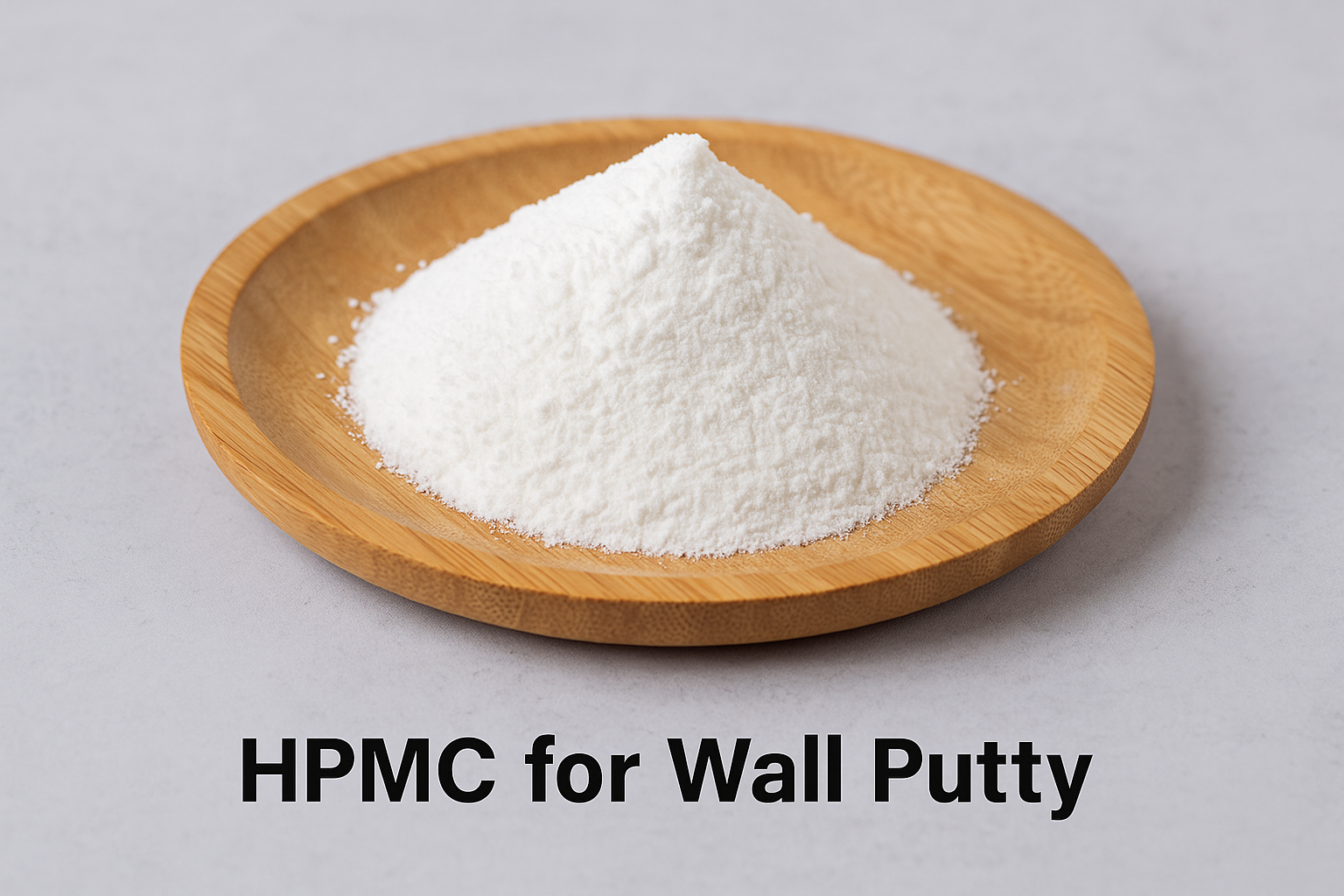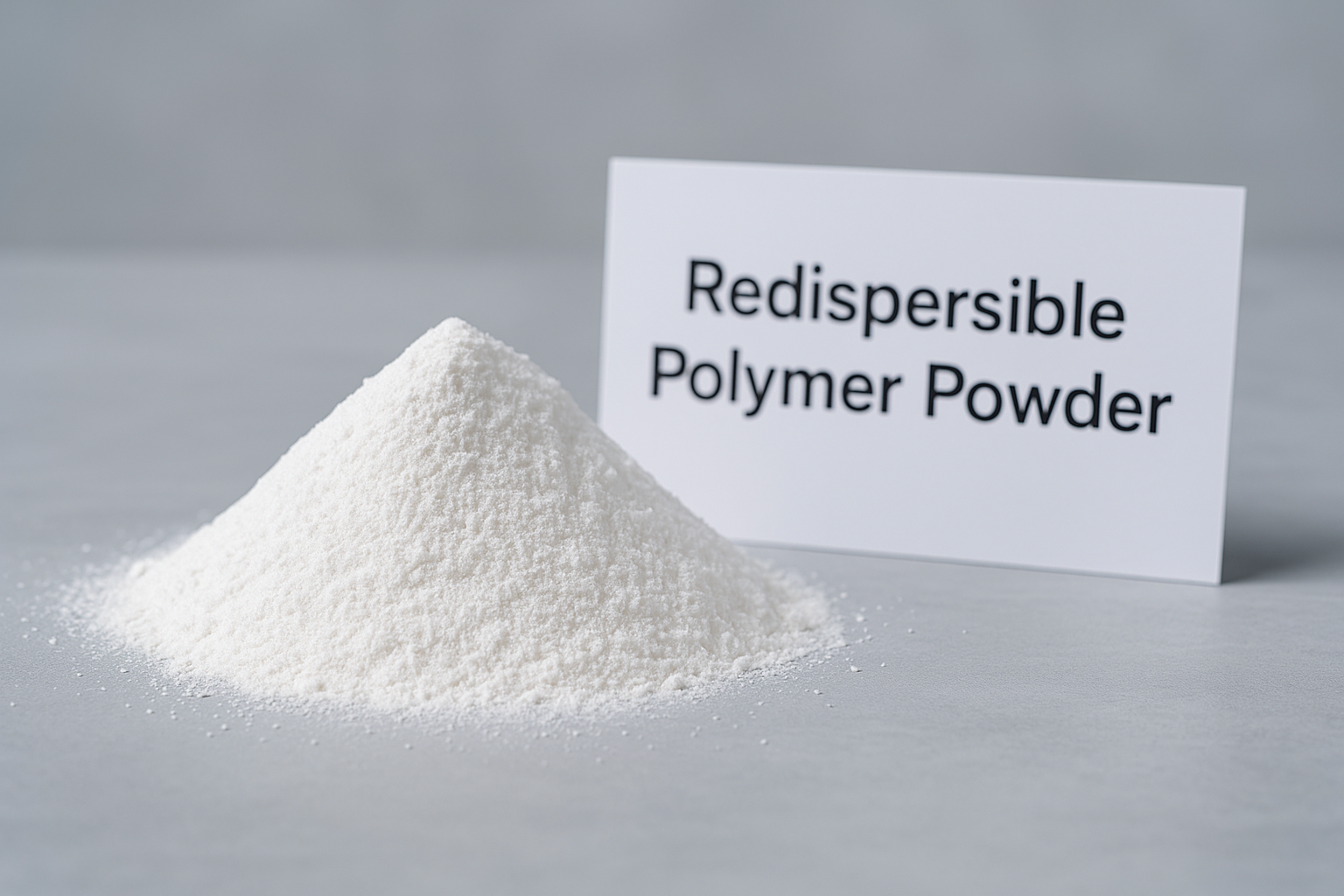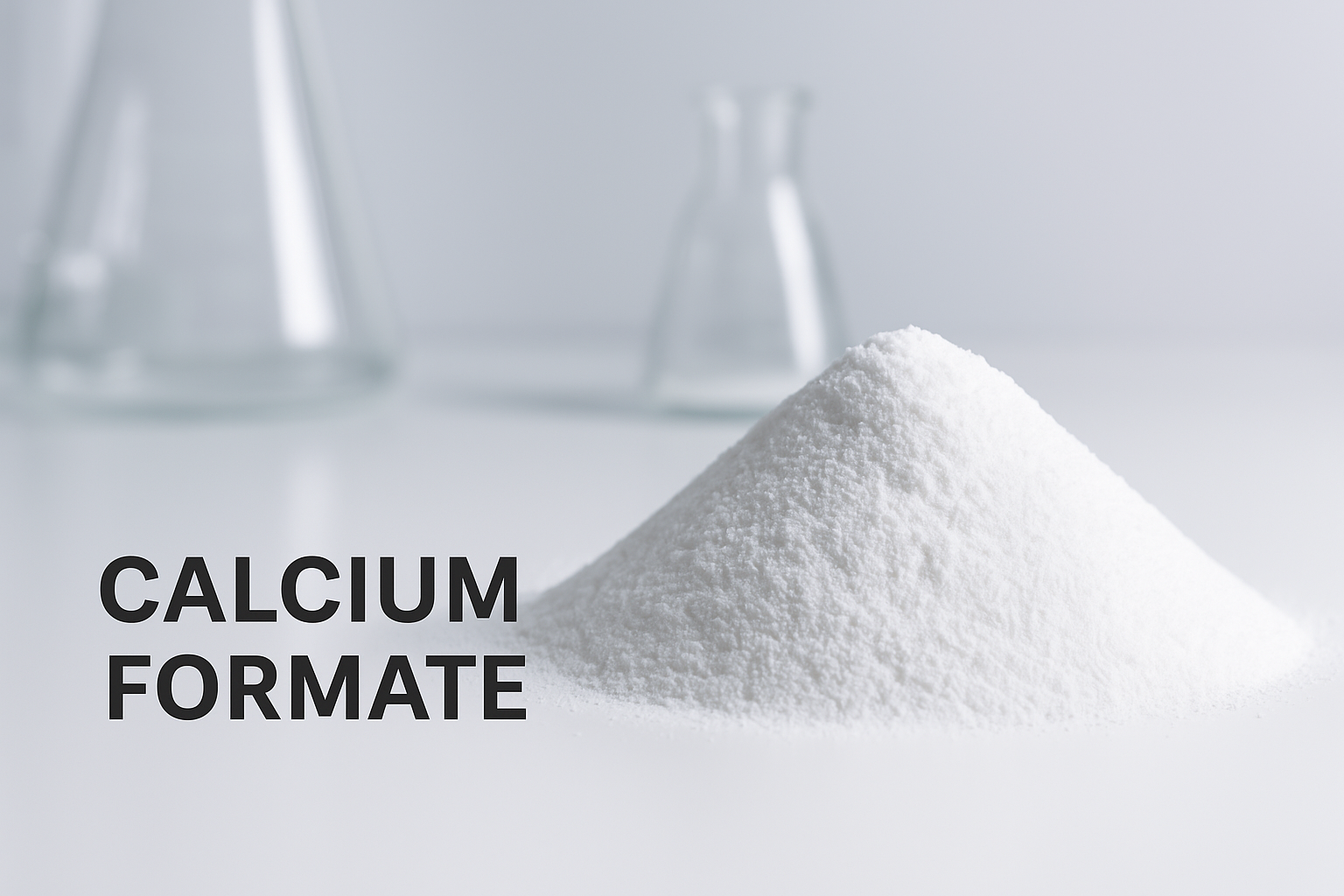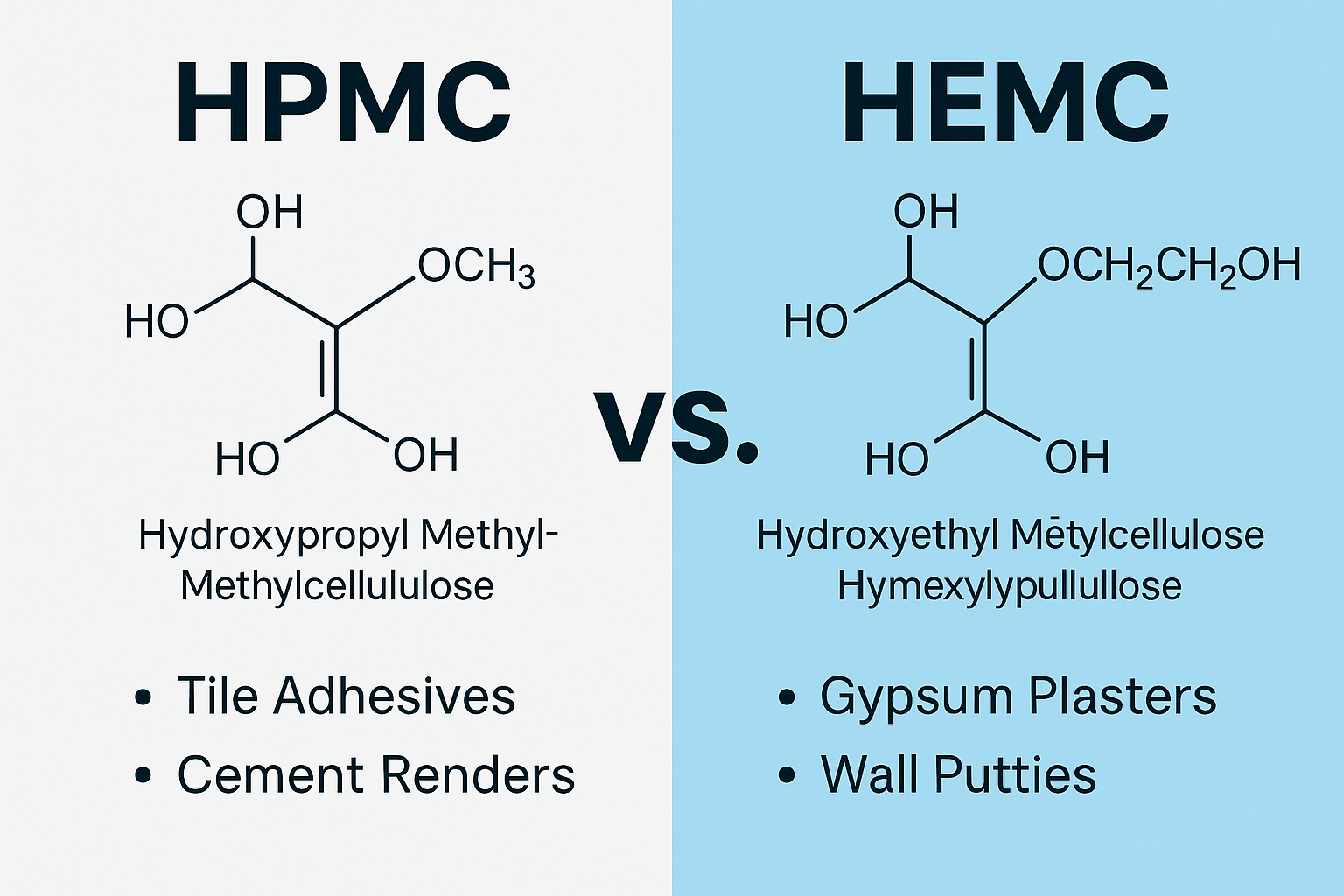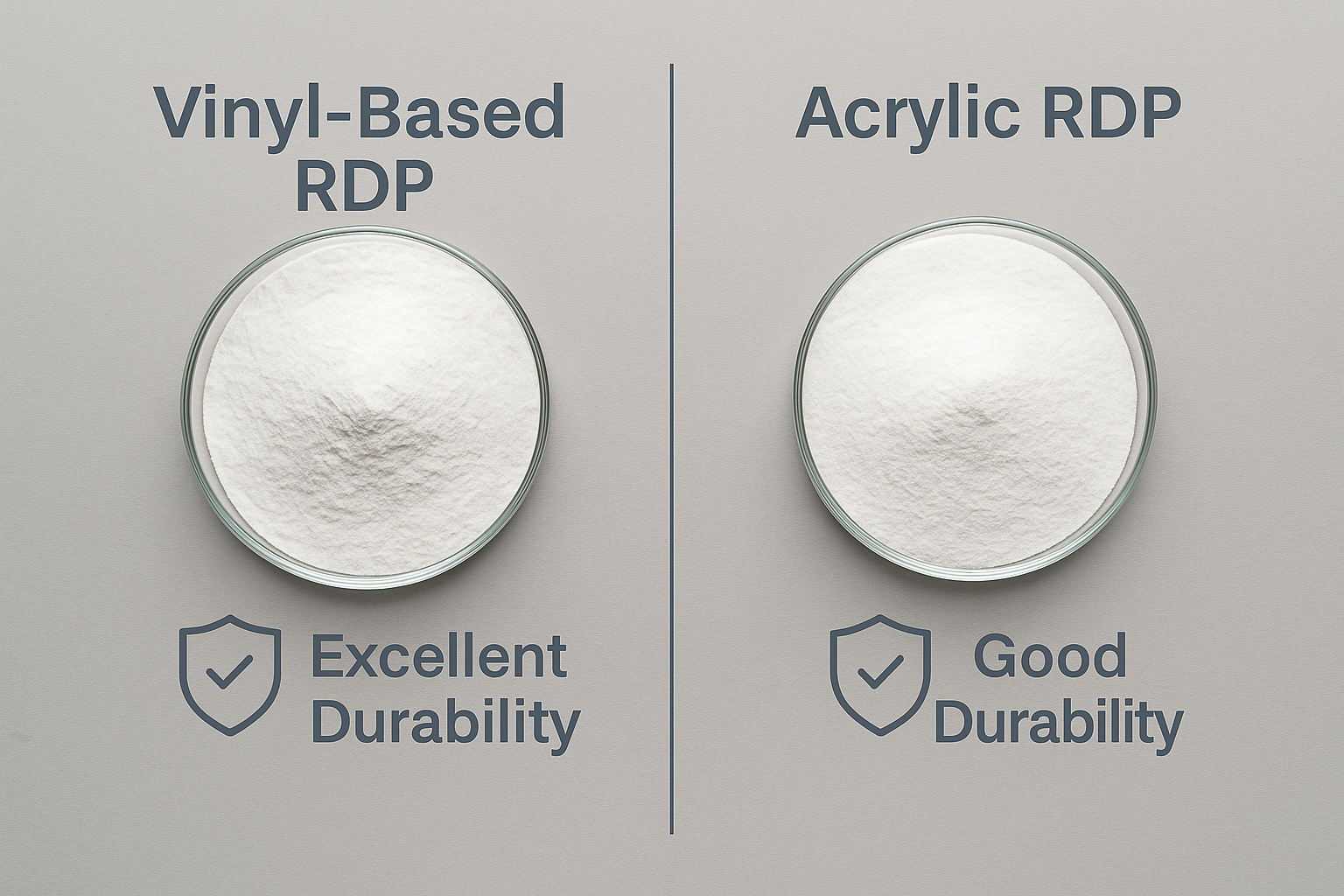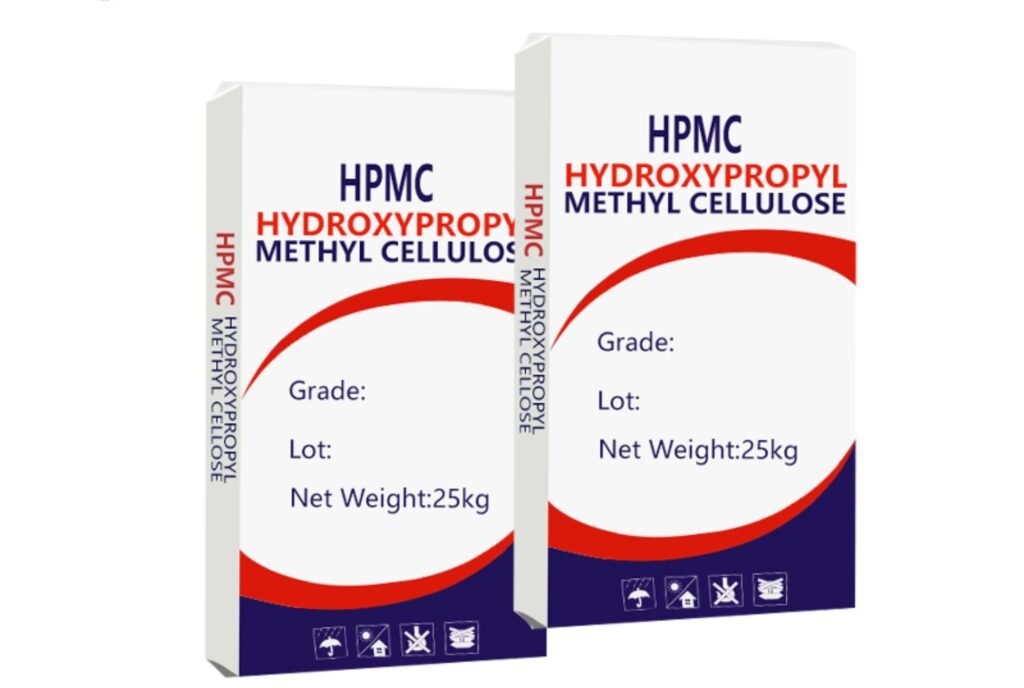Are you struggling with building materials that crack, crumble, or fail prematurely? Traditional mortars often disappoint when faced with challenging conditions, leaving you with costly repairs and frustrated clients.
Polymer mortar1 is a specialized building material that combines traditional cement-based mortar with polymer additives to enhance performance properties including flexibility, adhesion, water resistance, and durability. This modification creates a stronger bond that significantly extends the lifespan of construction projects.
When I first started supplying construction materials, I noticed many contractors returning with the same complaints about standard mortar failing in demanding environments. This pattern changed dramatically when they switched to polymer-modified options.
Let me share what makes this material so essential for quality construction projects.
What Is Polymer Mortar And Why Is It Revolutionary For Construction?
Pain point: Traditional mortars fail under stress conditions, causing costly repairs and project delays. Polymer additives solve these critical performance issues.
Polymer mortar is a specialized construction material that incorporates polymer additives (like latex, acrylic, or vinyl acetate) into conventional cement mortar mixtures. These polymers create a three-dimensional network within the mortar that dramatically improves adhesion, flexibility, and durability compared to standard formulations.
Polymer mortar works through a unique mechanism called polymer film formation. When mixed into mortar, the polymer particles disperse throughout the mixture.
As water evaporates during the curing process, these particles coalesce to form continuous polymer films and networks that intertwine with the cement hydration products.
This integration creates superior bonding between the mortar and substrate.
The chemical composition typically includes hydraulic cement (Portland cement), fine aggregates (sand), polymer additives2, and sometimes mineral additions like silica fume or fly ash. The polymer component usually makes up 5-20% of the cement weight, depending on the specific application requirements.
I remember visiting a construction site in Dubai where they were using our polymer-modified mortar for an exterior tiling project. The temperature fluctuations there are extreme, yet five years later, not a single tile had come loose. The contractor told me this would have been impossible with conventional mortar.
What Are The Primary Benefits Of Polymer Mortars?
Builders face constant challenges with material performance in variable conditions. Poor adhesion and cracking lead to expensive callbacks and damaged reputations.
Polymer mortars deliver exceptional adhesion to different substrates, significantly reduced water absorption, improved flexibility, enhanced chemical resistance, and better freeze-thaw durability. These properties make them ideal for high-stress applications like exterior finishing, wet areas, and high-traffic installations.
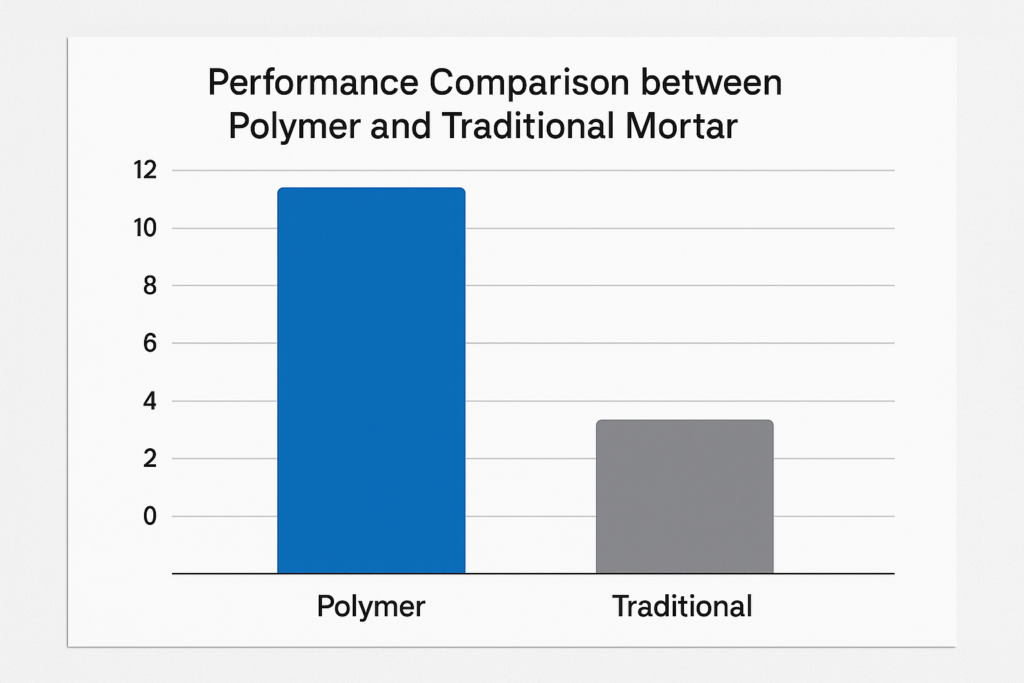
Polymer mortars offer significant advantages that make them worth the additional cost for many applications. The improved adhesion strength is perhaps the most valuable benefit – tests show that properly formulated polymer mortars can achieve bond strengths 3-5 times higher than conventional mortars.
Water resistance is another crucial advantage. By reducing water permeability by up to 60% compared to standard mortars, polymer additives create a more waterproof barrier that protects underlying structures from moisture damage.
This is particularly important for exterior applications and wet areas like bathrooms and kitchens.
The flexibility imparted by polymers allows the mortar to accommodate slight movements in the substrate without cracking. The impact resistance is also substantially improved – our lab tests show polymer mortars can withstand impacts up to 2.5 times greater than traditional formulations without failing.
| Property | Traditional Mortar | Polymer-Modified Mortar | Improvement |
|---|---|---|---|
| Adhesion Strength | 0.5-0.8 MPa | 1.5-2.5 MPa | 200-300% |
| Water Absorption | 8-12% | 2-5% | 60-75% reduction |
| Flexural Strength | 3-5 MPa | 7-10 MPa | 100-130% |
| Chemical Resistance | Low | Moderate to High | Significant |
| Freeze-Thaw Durability | Poor | Excellent | Substantial |
What Types Of Polymer Additives Are Used In Mortar?
Construction professionals often select the wrong polymer for their specific application, resulting in wasted materials and subpar performance. Understanding the options is essential.
The main polymer types used in mortar include redispersible polymer powders (like vinyl acetate-ethylene), liquid latex additives (such as styrene-butadiene), acrylic polymers, and cellulose ethers like hydroxypropyl methylcellulose (HPMC). Each type offers specific performance characteristics suited to different applications.

Each polymer type creates distinct property modifications in the final mortar. Redispersible polymer powders (RPP)1 are perhaps the most versatile and widely used. These are created through the spray-drying of polymer emulsions, resulting in a powder that reactivates when mixed with water.
RPPs based on vinyl acetate-ethylene (VAE) copolymers provide excellent adhesion and flexibility while maintaining good workability.
Styrene-butadiene rubber (SBR) latex2 additives are liquid polymers that significantly enhance the mortar's water resistance and flexibility. They're particularly valuable for exterior applications and areas subject to vibration or movement.
Acrylic polymers offer superior UV resistance and weathering protection, making them ideal for exterior façade applications.
Cellulose ethers like hydroxypropyl methylcellulose (HPMC) serve multiple functions – they improve water retention during the critical curing phase, enhance workability, and provide sag resistance for vertical applications. This is why our HPMC products are essential components in many high-performance mortar formulations.
| Polymer Type | Form | Key Benefits | Best Applications |
|---|---|---|---|
| Redispersible Polymer Powder (VAE) | Powder | Excellent adhesion, good flexibility, easy to mix | Tile adhesives, rendering mortars |
| SBR Latex | Liquid | High flexibility, water resistance | Waterproofing, repair mortars |
| Acrylic Polymers | Liquid/Powder | UV stability, chemical resistance | Exterior façades, decorative finishes |
| Cellulose Ethers (HPMC) | Powder | Water retention, improved workability | All mortars, especially thin-set |
How Much Polymer Additive Should Be Used In Mortar?
Applying incorrect polymer dosage wastes money with excessive amounts or results in performance failures when too little is used. Precise formulation is critical.
The optimal polymer dosage typically ranges from 3% to 20% of the cement weight, depending on application requirements. Tile adhesives usually require 5-8%, repair mortars need 7-12%, and waterproofing mortars may need 15-20%. Testing is essential to determine the exact amount for your specific project conditions.
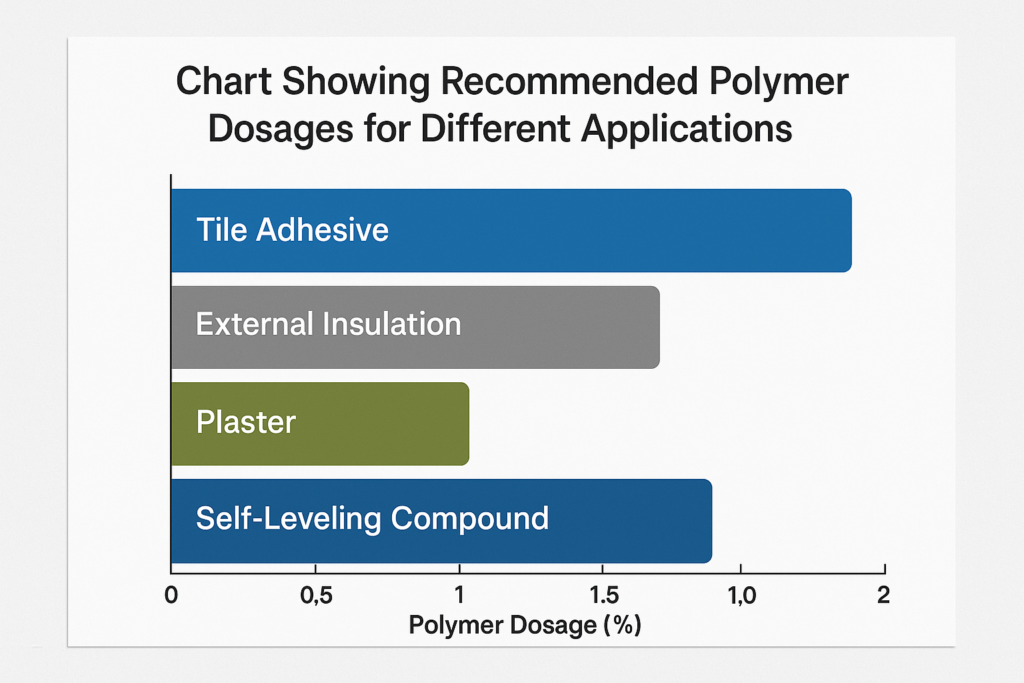
Determining the correct polymer dosage is both a science and an art. Multiple factors influence the optimal concentration, including the specific application, environmental exposure conditions, substrate type, and performance requirements.
I've found that many construction challenges can be traced back to improper polymer dosing.
For standard tile adhesives, a polymer content of 5-8% by weight of cement generally provides the right balance of performance and cost. However, for exterior applications subjected to freeze-thaw cycles or high temperature variations, this should be increased to 8-10%.
For repairs to concrete structures, particularly overhead or vertical repairs where sag resistance is critical, 7-12% polymer content is typically necessary.
The most demanding applications are waterproofing mortars3 and those exposed to chemical attack. These may require polymer contents of 15-20% to achieve the necessary impermeability and chemical resistance. However, exceeding these recommendations rarely improves performance and significantly increases costs.
| Application | Recommended Polymer Dosage (% of cement weight) | Critical Properties |
|---|---|---|
| Interior Tile Adhesives | 3-5% | Workability, open time |
| Exterior Tile Adhesives | 5-8% | Adhesion, water resistance |
| Façade Renders | 6-10% | Crack resistance, weatherability |
| Repair Mortars | 7-12% | Adhesion, reduced shrinkage |
| Waterproofing Mortars | 15-20% | Impermeability, flexibility |
How Does Polymer Fortified Mortar Solve Multiple Construction Challenges?
Construction projects face a complex combination of environmental stresses and performance demands that standard materials simply cannot meet consistently.
Polymer fortified mortars provide a comprehensive solution to multiple construction challenges including reduced cracking in varying climate conditions, enhanced adhesion to difficult substrates, improved resistance to freeze-thaw damage, and better chemical resistance. This versatility makes them ideal for both new construction and renovation projects.
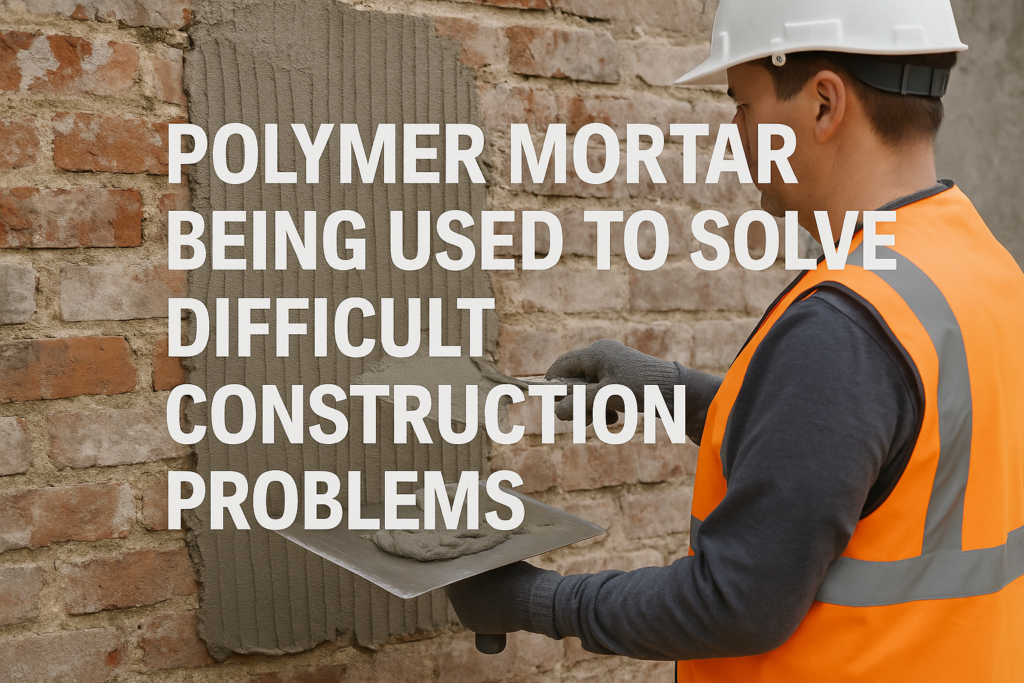
The multifunctional nature of polymer mortars comes from their unique microstructure. When properly formulated, the polymer component forms a continuous film throughout the cementitious matrix, sealing micropores and enhancing the physical properties throughout the material.
This integrated structure provides simultaneous benefits that would otherwise require multiple specialized products.
In exterior applications, polymer mortars excel by solving the combined challenges of thermal expansion, moisture penetration, and freeze-thaw damage. A single well-formulated polymer mortar can replace conventional mortar plus separate waterproofing membranes, saving both time and labor costs during application.
For tile installations, polymer-modified adhesives4 create stronger bonds that resist both physical stresses and moisture penetration. This is critical for modern large-format tiles, which place higher demands on adhesives due to their weight and reduced number of grout joints.
Our clients installing large porcelain tiles report virtually eliminating callbacks for loose tiles after switching to properly formulated polymer mortars.
I
n repair applications, polymer mortars address multiple failure points simultaneously – they bond strongly to existing concrete (even smooth surfaces), resist shrinkage cracking during curing, and provide long-term protection against water and chloride penetration.
This comprehensive protection extends the service life of repairs, reducing the frequency of maintenance cycles.
WHHPMC – Your Partner For High-Performance Polymer Mortar Components
Finding reliable, consistent polymer additives that deliver promised performance can be frustratingly difficult. Many suppliers provide products that vary batch to batch.
At WHHPMC, we specialize in manufacturing premium hydroxypropyl methylcellulose (HPMC)5 and redispersible polymer powder specifically engineered for high-performance mortars. Our products are produced with strict quality control across six production lines, ensuring consistent performance for mortar manufacturers worldwide.

Our commitment to quality begins with our state-of-the-art production facilities. With six dedicated production lines operating under strict quality control protocols, we maintain exceptional consistency from batch to batch. This reliability is crucial for mortar manufacturers who need predictable performance in their formulations.
Our technical team has developed specialized grades of HPMC and redispersible polymer powders that work synergistically to optimize mortar performance. The HPMC provides critical water retention during the curing phase while improving workability and sag resistance.
Our redispersible powders deliver the enhanced adhesion, flexibility and water resistance that define premium polymer mortars.
Unlike generalist suppliers, we focus exclusively on construction polymer additives. This specialization allows us to develop deep expertise in how our products perform in real-world construction scenarios across different climate zones.
Our products are currently enhancing mortar performance in over 30 countries, from the extreme heat of Saudi Arabia to the humid conditions of Southeast Asia.
For mortar manufacturers seeking to develop premium products, we offer both standard and customized solutions with technical support throughout the formulation process. Our research laboratory can help optimize formulations for specific performance targets, ensuring you develop market-leading products with competitive advantages.
Conclusion
Polymer mortars represent the most significant advancement in mortar technology in decades. By incorporating the right polymer additives at the correct dosages, you can dramatically improve performance, durability, and customer satisfaction in your construction projects.
-
Explore the advantages of Polymer mortar, which enhances durability and performance in construction, ensuring long-lasting results. ↩ ↩
-
Learn how polymer additives revolutionize construction materials, providing better adhesion and flexibility for various applications. ↩ ↩
-
Exploring the benefits of waterproofing mortars can help you make informed decisions for projects requiring high durability and resistance. ↩
-
Learn how polymer-modified adhesives create stronger bonds for large-format tiles, ensuring durability and reducing maintenance issues. ↩
-
Discover the role of HPMC in enhancing mortar performance and its importance in achieving high-quality construction materials. ↩
